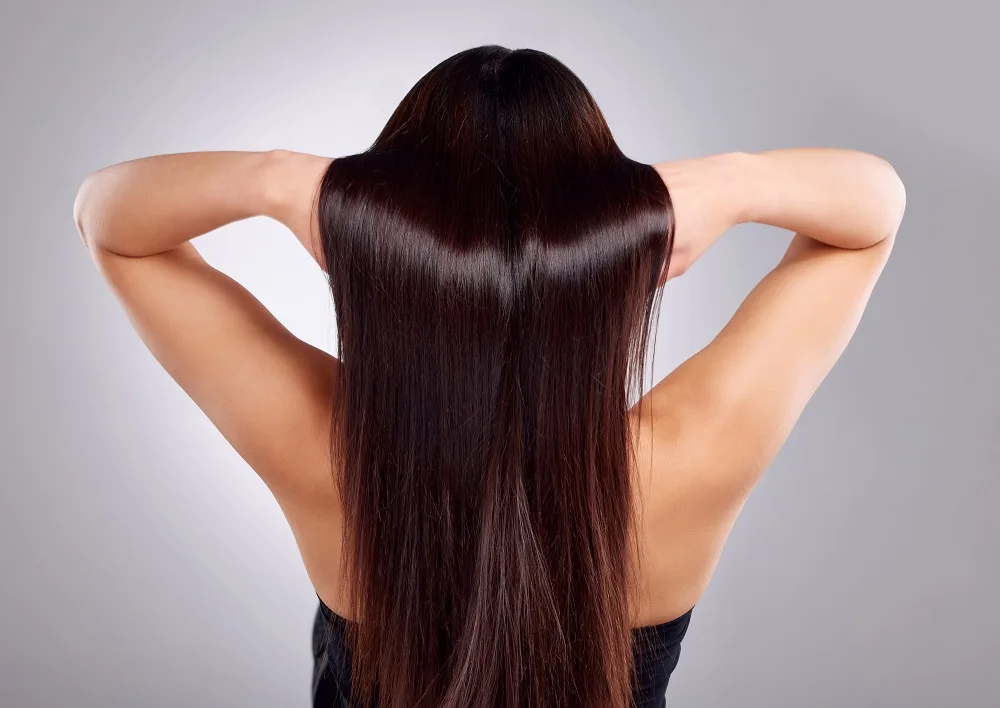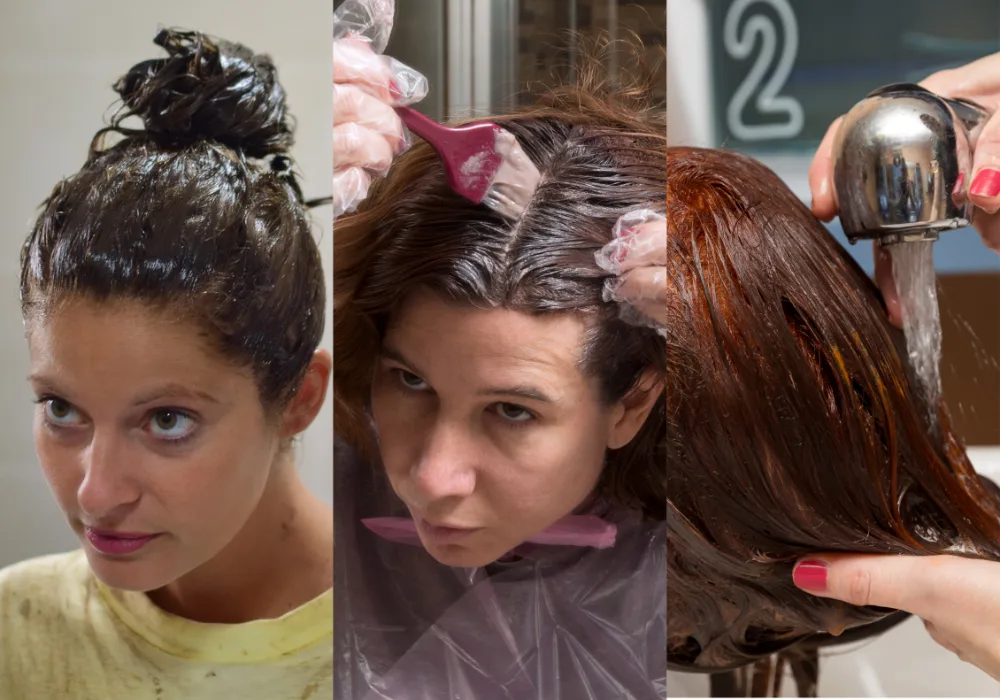Have you ever noticed that your hair feels different after you dye it? It often seems softer, smoother, and shinier.
We all know that dyeing hair is notorious for causing damage. But why does freshly dyed hair look so much healthier? Does this actually mean your hair is healthier? Well, not really.
Then, why does your hair feel better after dyeing?
We have explained the mysterious boost in texture and shine that comes with fresh hair color in this article.
Why Does My Hair Feel Soft And Shiny After I Dye It?

Hair feels better after dyeing because hair dye adds volume by depositing pigment into the hair shaft that acts as a filler on a fundamental level.
Minerals from harsh water, remaining residue from hair products, and an excess of natural oils can accumulate on strands’ surfaces and cause the hair to look and feel dull and lifeless.
Permanent dyes use developers and alkaline substances that remove the buildups and cause hair cuticles to open up for the color to penetrate. New color molecules add tangible fullness, silkiness, and shine to hair strands.
Semi-permanent dyes coat the surfaces of hair strands instead of penetrating the shaft. It adds shine, volume, and uniform texture to the hair shaft, which might make the hair feel smoother.
Think of a room that gets a fresh coat of paint. The space instantly feels more vibrant and dynamic, even if the color is the same as the original!
After using a permanent hair dye or a semi-permanent dye, hair feels better because those build-ups have been stripped from the strands, allowing for shine and softness.
The after-care element of hair dyeing also plays a critical role in hair nourishment. Conditioners specific to chemical dye reseal the cuticle, bind the dye molecules, and smooth out the strands. These make your hair feel better after dyeing.
Does Dyeing Your Hair Make It Healthier?
No dyeing hair does not make it healthier. While hair may feel softer and look shinier immediately after dyeing due to conditioning agents in the dye and the sealing of hair cuticles, this is more about appearance and texture rather than an improvement in hair health.
In reality, the chemicals used in hair dyes, especially permanent dyes, can be damaging over time.
Strands can become fragile after consistent breaking down and reconstruction of the shaft’s inner and outer structures.
Dyeing regularly can strip the hair of its natural oils, leading to dryness.
Hair lipids and proteins are vital to hair’s overall health, natural shine, and ability to maintain. Common hair dye chemicals like hydrogen peroxide, phenylenediamine, and ammonia dilute essential lipids and keratin proteins.
Compromising these elements can change the hair’s natural texture, making it more difficult to style.
How To Prevent And Repair Hair Damage from Dyeing

You can implement these steps into your routine to prevent or repair this damage.
Before you color it, step up your hair care. About one week before dyeing it, utilize a hair mask or other form of deep-conditioning to bulk up the protein and lipid strength before undergoing chemical change. The healthier your hair is before the dye, the healthier it will be after!
If you decide to box dye at home, follow precautions like testing the dye on a patch of skin before application and wearing gloves to protect your skin from irritation.
Try to use products that are ammonia-free and rich with fortifying ingredients like natural oils, silk extracts, and keratin.
Some people use all-natural home treatments for dyeing hair, using products like henna, coffee, chamomile, black tea, sage, beet, carrot, or lemon juices. While these methods can modify your hair color in a completely non-toxic way, the results are very temporary.
Be sure to precisely follow the product instructions about the amount of time to leave in the dye before rinsing and how to use the partnering conditioner to prevent hair damage.
Bi-weekly leave-in conditioner or hair mask treatments can strengthen strands suffering breakage or thinning from dye jobs or prevent the damage from developing to that point.
Showering with cold or at least lukewarm water also preserves colored hair health by keeping cuticles sealed, as opposed to hot water, which opens and lifts cuticles.
It also pays to avoid using heat-styling tools on colored hair because they are also prone to causing hair damage, and you don’t want to compound the weakening effects of the dye.
Consistent hair dyeing can damage your beloved locks, but if you are mindful about the products you use and your care routine, you can enhance and preserve long-term hair health.
Conclusion
Hair feels better after dyeing because both semi-permanent and permanent dyes improve the texture of hair strands and remove product residue, and excess oils, which can dull and weigh down hair.
Permanent hair dye opens the cuticles and deposits pigment that thickens and adds volume to hair strands. This results in hair that feels softer, fuller, and moves better.
Semi-permanent dyes, on the other hand, coat, and seal hair cuticles, which provide shine and smoothness to hair.
